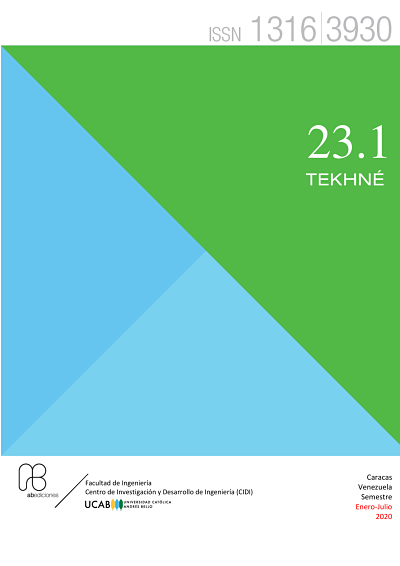Physicochemical characterization of neutralized and calcined red sludge with possible catalytic activity in advanced oxidation processes
Caracterización fisicoquímica de los lodos rojos neutralizados y calcinados con posible actividad catalítica en procesos de oxidación avanzada
DOI:
https://doi.org/10.62876/tekhn.v23i1.4494Keywords:
Abstract
The purpose of this research is to determine the effect of thermal treatments and washing of red sludge from the Venezuelan Corporation of Guayana-Bauxilum to obtain a material with possible catalytic activity in advanced oxidation processes. To this end, the physicochemical properties of the prepared red sludge were determined, which were treated using different neutralization processes: deionized water, 50% hydrogen peroxide and brine, subjected to calcination at temperatures of 200 and 400 °C. In addition, they were characterized using the techniques of X-ray fluorescence (XRF), X-ray diffraction (XRD), Fourier transform infrared spectroscopy (FT-IR), scanning electron microscopy (SEM) and energy dispersion spectroscopy. X-ray scanning electron microscopy (EDX-SEM). Porosity and surface area were determined using the BET (Brunauer-Emmett-Teller) method. The size of the crystalline domain was obtained using the Scherrer equation. A 3x2 mixed factorial experiment design was applied to determine the effect of the neutralization method and calcination temperature on the specific surface area values and their percentage increase. The results demonstrated the decomposition of vaterite (CaCO3) and the dehydration of goethite [α-FeO(OH)3] to hematite (α-Fe2O3), and of gibbsite [α-Al(OH)3] to boehmite. [α-AlO(OH) ] at a temperature of 400 °C. It was demonstrated that active sites typical of photochemical (Fe+3) and photocatalytic (Ti and Mn) processes are found on the surface of the treated red mud. At a calcination temperature of 400 °C, the specific surface area of the red mud was raised by 290%. The size of the crystalline domain decreased considerably with increasing calcination temperature. From a statistical point of view, it was possible to demonstrate that the calcination temperature is a determining factor in the specific surface area and its percentage increase.




